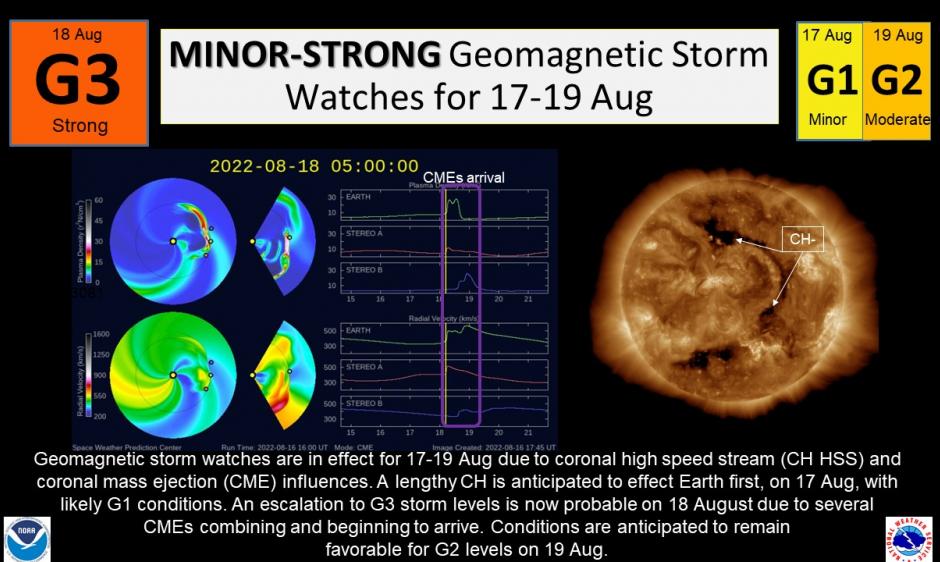
Geomagnetic storm watches are in effect for 17-19 August, 2022 due to likely CH HSS and CME influences. A recurrent coronal hole (CH) high speed stream (HSS) is anticipated to connect with Earth first, on 17 Aug. The resultant elevated and disturbed solar wind field is thought to be enough for potential G1 (Minor) geomagnetic storm conditions on 17 Aug. Geomagnetic responses are likely to escalate to G3 (Strong) conditions on 18 Aug due to the arrival at or near Earth of multiple coronal mass ejections (CMEs) that have departed the Sun since 14 Aug. Despite the numerous CMEs, most are expected to have little to no impact at Earth, however, at least four have potential Earth-directed components. The most recent flare-associated CME took place from small, but complex, Region 3078 at 3:58 am EDT (0758 UTC) on 16 Aug; while the first CME in this chain of activity took place on 14 Aug. Forecast confidence is low to moderate regarding Earth impact of these CMEs, as most of the ejecta is expected to pass either ahead or south of Earth’s orbit. However, model runs indicate combined arrival of some of these CMEs at or in the vicinity of Earth beginning 18 Aug – therefore, the G3 (Strong) storm watch is in effect for that day. Any CME influences are likely to continue on 19 Aug and a G2 (Moderate) storm watch is posted accordingly.
When the CME approaches Earth, NOAA’s DSCOVR satellite will be among the first spacecraft to detect the real-time solar wind changes and SWPC forecasters will issue any appropriate warnings. Impacts to our technology from a G3 storm are usually minimal. However, a G3 storm has the potential to drive the aurora further away from its normal polar residence, and if other factors come together, the aurora might be seen over portions of Pennsylvania, Iowa, to northern Oregon. For additional information about space weather, geomagnetic storms, aurora and viewing tips, and CMEs – click the terms. NOAA's Space Weather Prediction Center is the official source for space weather forecasts, watches, warnings and alerts. Visit www.spaceweather.gov for updates. Learn about Solar Cycle 25.